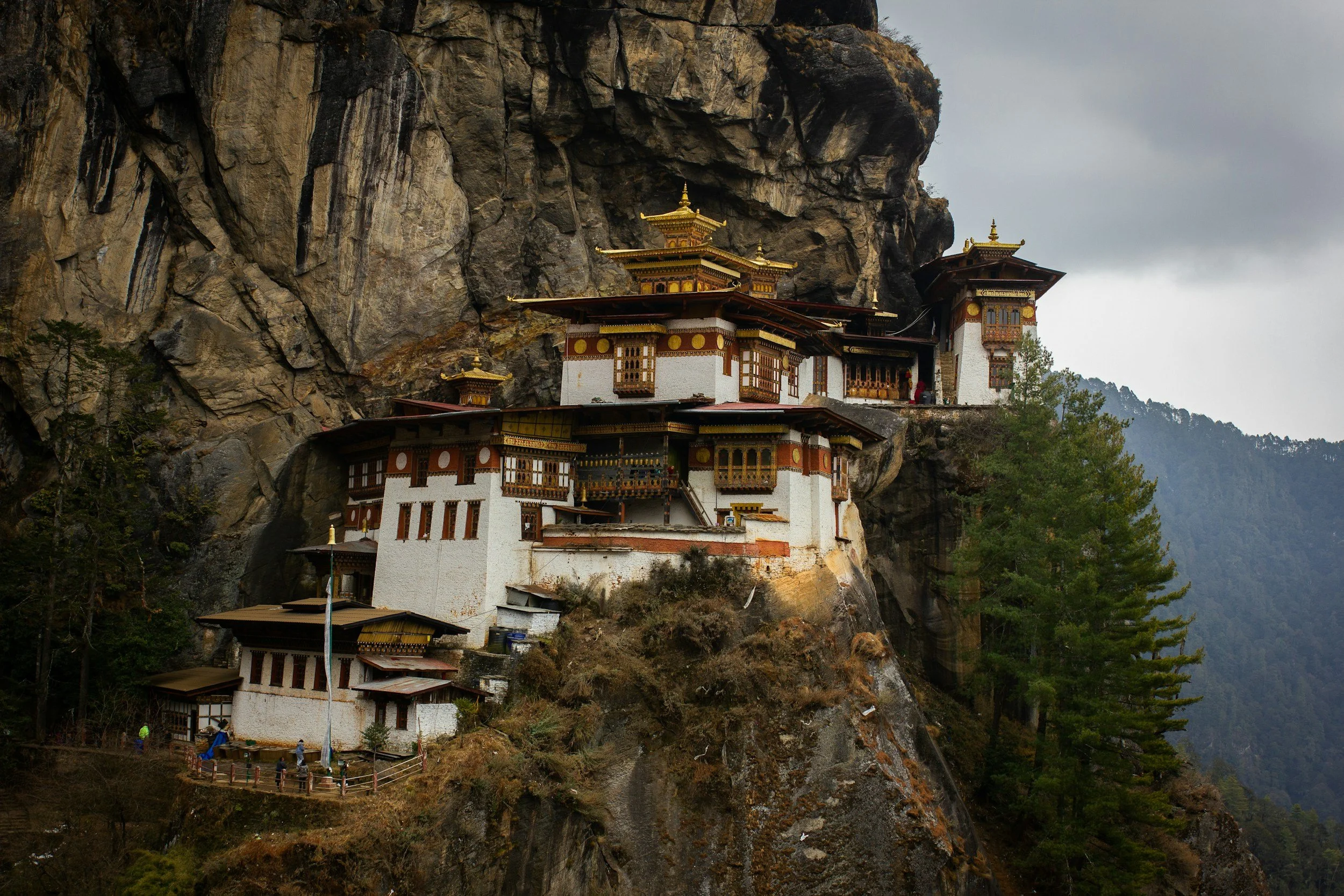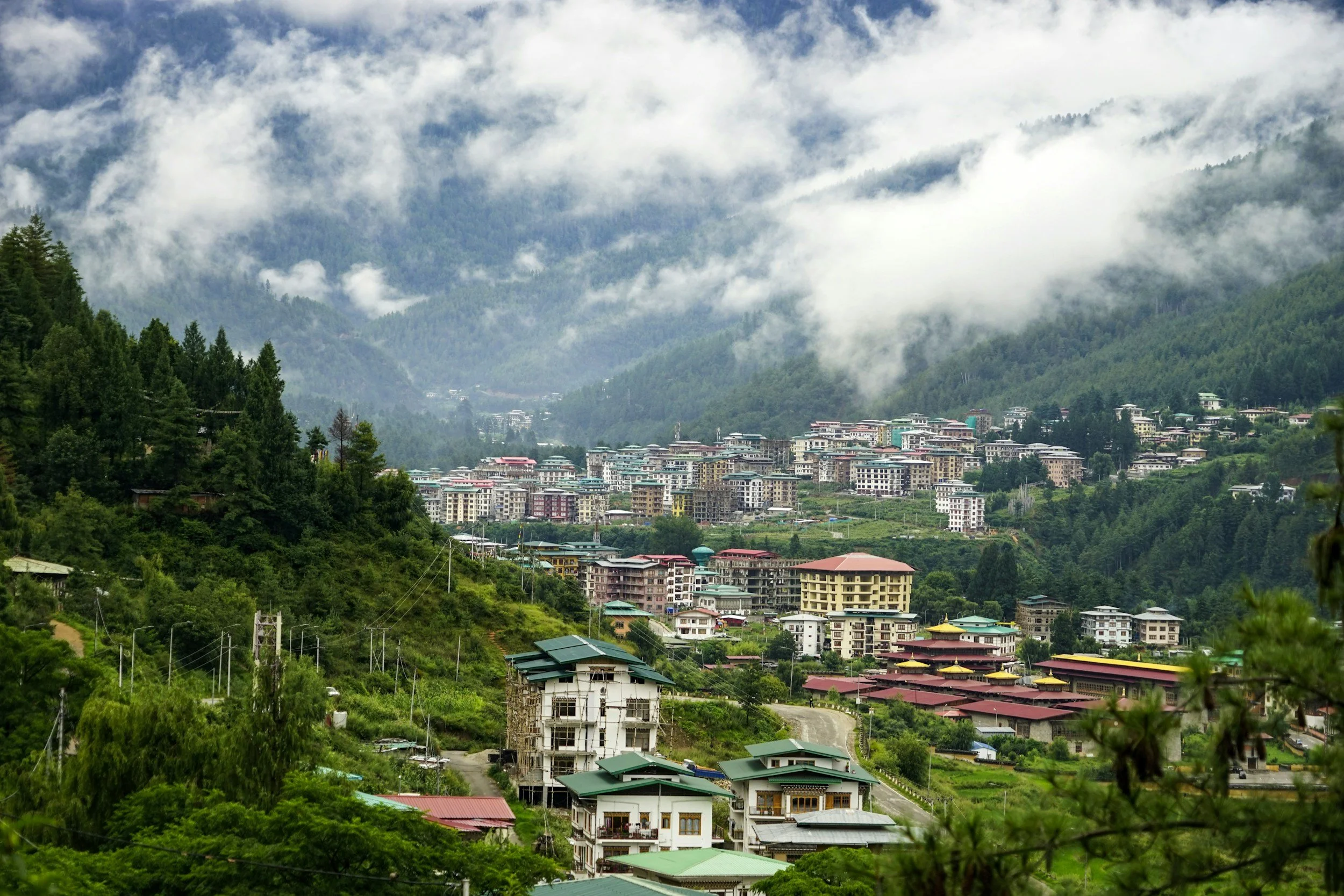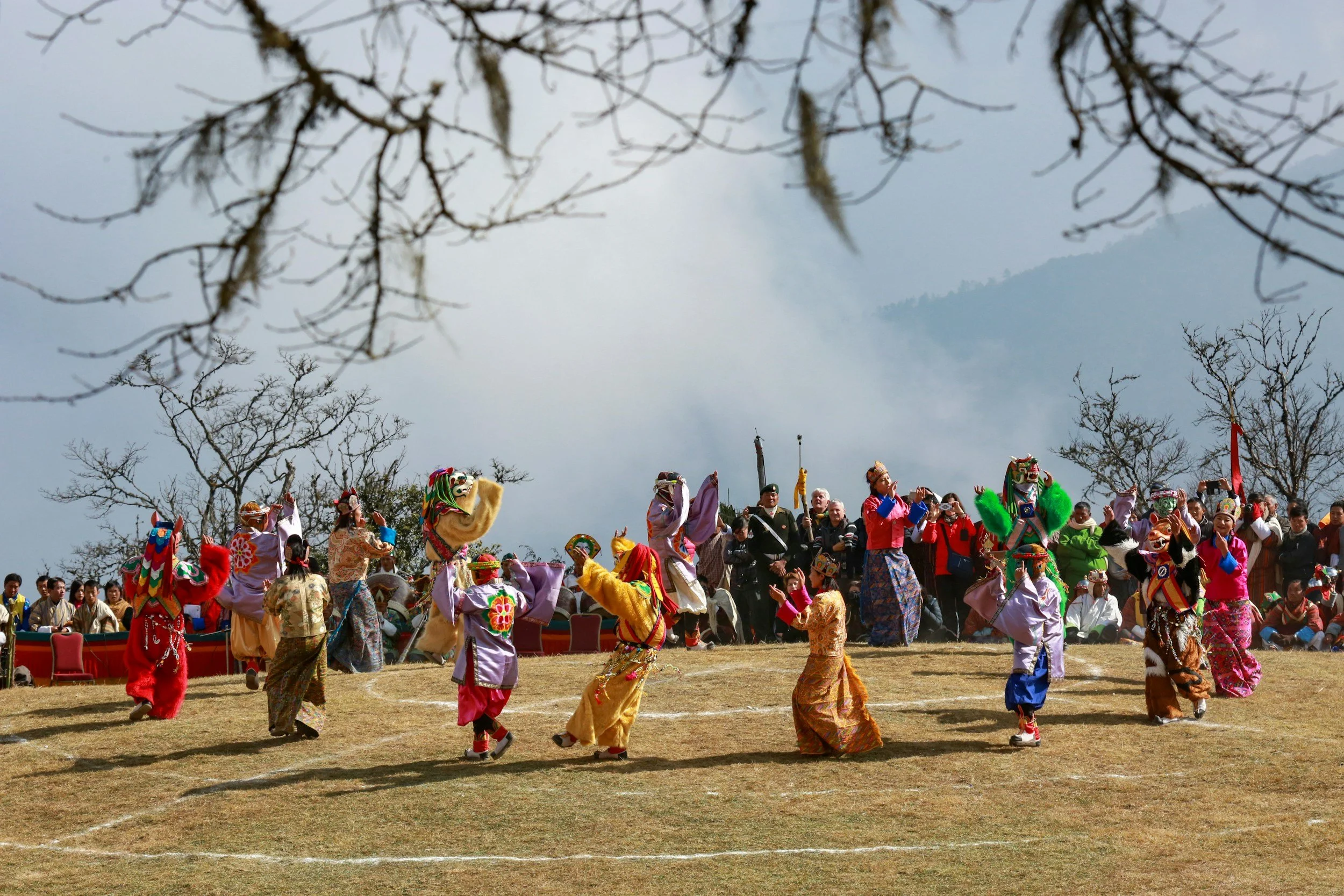
Bhutan Travel Guide
Bhutan: The Dragon Kingdom in the Clouds
Bhutan doesn’t dazzle with neon. It glows.
It balances Himalayan peaks with rice paddies, ancient monasteries with quiet valleys, and timeless traditions with cautious steps toward modernity. It’s a place where Gross National Happiness matters more than GDP — and where you can still find silence so pure it feels like part of the landscape.
This is the Himalayas with soul. It’s serene, layered, and breathtaking — like that first glimpse of Tiger’s Nest clinging to the cliffs.
Scroll down for more travel photos from Bhutan.
Quick Facts
Capital: Thimphu
Population: Approx. 780,000
Language: Dzongkha (English widely spoken in cities)
Currency: Ngultrum (BTN), pegged to the Indian Rupee
Time Zone: BTT (UTC +6)
Climate: Highland — cool summers, cold winters, big variations by altitude
Visa & Sustainable Development Fee (SDF): Visa is mandatory and costs around USD 40 per person. In addition, all tourists (except Indian nationals) pay a Sustainable Development Fee of USD 100 per person per night (children aged 6–12 pay USD 50; under 5 free) . Indian visitors pay a lower SDF (~USD 15) .
Top Religion: Vajrayana Buddhism (state religion), with Hinduism in the south
Safety: Extremely safe — crime is rare, but altitude sickness is a real concern
Transport: Private driver/guide required for most travel; limited domestic flights; mountain roads can be challenging
Vibe: Sacred, serene, sometimes surreal
Best for: Hikers, spiritual seekers, cultural explorers, and anyone allergic to mass tourism
Top 5 Attractions
Paro Taktsang (Tiger’s Nest Monastery)
A cliffside monastery hanging 900 meters above the valley floor — worth every steep step.
Punakha Dzong
A fortress-monastery at the confluence of two rivers, with whitewashed walls and golden roofs.
Thimphu
The capital with no traffic lights, a giant sitting Buddha, weekend markets, and a surprisingly hip café scene.
Dochula Pass
A mountain pass lined with 108 chortens and views that will rearrange your soul on a clear day.
Phobjikha Valley
A glacial valley and winter home of the black-necked cranes — perfect for reflective walks.
Activities
Trekking: from easy day hikes to legendary treks like the Snowman Trek
Visiting dzongs and monasteries
Archery — the national sport (don’t miss a village match!)
Hot-stone baths in rural farmhouses
Colorful tsechu festivals with masked dances
Birdwatching in serene valleys
Sampling ema datshi (the fiery chili-and-cheese stew Bhutan is famous for)
Culture & Etiquette
Dress modestly when visiting monasteries and dzongs (covered shoulders and legs)
Remove shoes before entering temples
Circumambulate religious monuments clockwise
Avoid public displays of affection
Show respect when locals prostrate or spin prayer wheels
Gross National Happiness is not a joke — it’s policy. Ask about it, and you’ll learn a lot
What Not to Do
Don’t smoke publicly
don’t disrespect the royal family
Don’t take photos inside temples unless allowed
Don’t trek unguided, and don’t rush—Bhutan sets its own pace.
Tipping in Bhutan
Tipping isn’t compulsory, but common in tourism—especially for guides, drivers, and trek crews.
Guides: USD 10–25 per person per day
Drivers: USD 5–15 per person per day
Trekking staff (cooks, porters): USD 5–15 per person per day
Restaurant and hotel bills often include a service charge (~20%), so extra tipping is optional—though a small gesture is always appreciated .
Cannabis in Bhutan (as of 2025)
Cannabis grows wild in Bhutan, but its use is strictly illegal. Possession carries legal penalties despite its presence in the wild—so just don’t go there.
Destinations by Region
Western Bhutan
Paro – Gateway to the country, home to Tiger’s Nest and historic valleys
Thimphu – Cultural capital with modern-day charm
Punakha – Heart of religious and architectural splendor
Central Bhutan
Trongsa – The ancestral seat of Bhutan’s monarchy
Bumthang – Spiritual heartland dotted with ancient temples
Eastern Bhutan
Mongar & Trashigang – Authentic villages, colorful festivals
Lhuentse – Known for exquisite handwoven textiles
Far North
High Himalayas – Remote trekking routes, yaks, and solitude for the bold traveler
Final Note
Bhutan doesn’t chase visitors—it welcomes them with purpose. It’s a sanctuary of stillness, kindness, and deeply preserved culture. You’ll climb mountains, cry through chili-laden meals, and leave questioning what happiness truly means.
You won’t fully understand Bhutan in one visit—and that’s exactly why it lingers in your heart.












